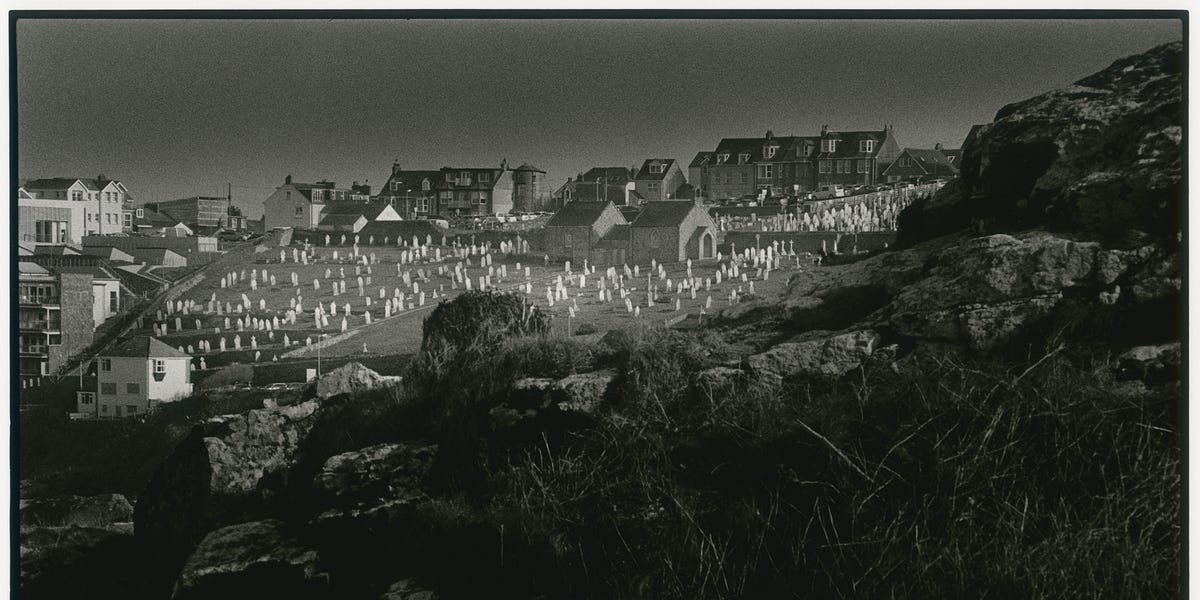A short article about expressive printing in the darkroom.




His examples were quite terrible, obvious with no subtle workmanship.
I own two of Andrew Sanderson's prints, and I can say without hesitation that they are beautiful, magical prints. I have no doubt that he knows what he's doing in the darkroom.
I own two of Andrew Sanderson's prints, and I can say without hesitation that they are beautiful, magical prints. I have no doubt that he knows what he's doing in the darkroom.
"Without dodging"? Why take away one of the simplest tools conceivable to use, and replace it with something dicey? And burning, yet not a dodging option? That's just plain silly.
Oh well, no harm, no foul. If it works for him, fine. But I'm not going to waste any time with it.
the samples are heavy handed to the point of painful to look out on an article about silver printing.
Oh, I don't doubt it is. For me, the examples aren't very compelling and perhaps they're just not representative of the man's overall work. Perhaps, as @Don_ih suggested, the examples are purposefully chosen to exhibit very obvious signs of rather heavy-handed burning.I refuse to believe this is someone's real work.
But I guess I'm just not the target audience.
'Necessity' is of course rather subjective in this context. Looking at the gallery of B&W images on your website, I personally would have applied burning and/or dodging to about 95% if I were to print them for presentation. That doesn't mean it's "necessary". Just that I think they could look even better that way. I have a feeling that the man who wrote this blog we're commenting on would have made the same argument.then it is rarely nessesary.

'Necessity' is of course rather subjective in this context. Looking at the gallery of B&W images on your website, I personally would have applied burning and/or dodging to about 95% if I were to print them for presentation. That doesn't mean it's "necessary". Just that I think they could look even better that way. I have a feeling that the man who wrote this blog we're commenting on would have made the same argument.
I do much less dodging/burning. I would say the necessity of burning/dodging is driven by the photographer and their image, rather than 'proper' exposure and development. I just tend to push most my editing work up to the front end (during image creation) rather than in post-processing. Saves on film and darkroom time.I dodge or burn probably less than 5% of my prints. If you make the correct negative exposure and correct development of the negative for the type of enlarger you use to print, followed by the correct print exposure, without any contrast control, then it is rarely nessesary.

But what koraks wrote has No meaning in context to the discussion at hand. Of course he would make different images if he was standing there next to cliveh.FWIW, I took @koraks initial point not to be saying that there are rules about whether @cliveh should dodge and burn, but rather about there being a difference between what @cliveh and what @koraks would do - i.e. the decision about the issue is one that is personal to the preferences and vision of the photographer/printer.
...
koraks is judging cliveh's work based on how he would print them himself. As well as meaningless, that's not nice to begin with, and against forum policies to give unwanted critiques -- if he meant no criticism by his words, he needs to be more careful. Because he basically said that he could print cliveh's negative better than cliveh....Looking at the gallery of B&W images on your website, I personally would have applied burning and/or dodging to about 95% if I were to print them for presentation. That doesn't mean it's "necessary". Just that I think they could look even better that way....
Light creates mood, but lighting everything kills it. Light must be used to reveal or accentuate something, and to do that there must be other areas that are dark, the dark areas work by revealing their information only when the image is studied. So the thing that you want your viewers to notice in your print should be lit in some way, and the other areas should be darkened down.
But what koraks wrote has No meaning in context to the discussion at hand. Of course he would make different images if he was standing there next to cliveh.
koraks:
koraks is judging cliveh's work based on how he would print them himself. As well as meaningless, that's not nice to begin with, and against forum policies to give unwanted critiques -- if he meant no criticism by his words, he needs to be more careful. Because he basically said that he could print cliveh's negative better than cliveh.
We may need the experience of those who are in the darkroom printing "instruction game" involving that level of students who may be in a better position to know
pentaxuser
| Photrio.com contains affiliate links to products. We may receive a commission for purchases made through these links. To read our full affiliate disclosure statement please click Here. |
PHOTRIO PARTNERS EQUALLY FUNDING OUR COMMUNITY:  |